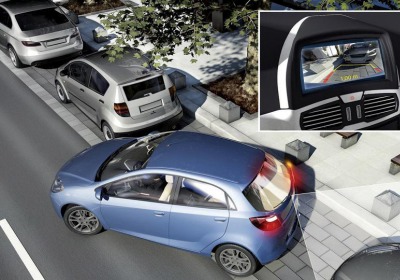Infotainment in cars could get a boost from backup-camera mandate
Tue, 21 Feb 2012
A federal mandate to require backup cameras in all vehicles, expected Feb. 29, will be a bonanza for suppliers of collision-avoidance equipment.
But the mandate also could provide an unintended boost to the infotainment industry.
If automakers install display screens for backup cameras in entry-level vehicles, they could add no-frills applications for navigation, audio and hands-free phone calls.
Auto shoppers are snapping up connected-car features, and General Motors in January demonstrated the feasibility of a no-frills infotainment system when it announced plans to equip the 2013 Chevrolet Sonic RS with MyLink.
The National Highway Traffic Safety Administration has been working on its backup safety rules since 2007, when Congress ordered it to establish standards. Backup accidents cause an average of 292 fatalities and 3,000 serious injuries per year, according to federal statistics.
This month NHTSA is expected to instruct automakers to equip vehicles with video cameras that detect pedestrians behind the vehicles.
In a rule-making notice published in 2010, NHTSA tentatively concluded that "rearview video systems are the most effective technology available today."
The agency's notice also hinted at some guidelines. A rear-facing camera should be able to scan an area 10 feet wide by 20 feet deep behind the vehicle, and the driver should be able to view it on a video screen.
The Insurance Institute for Highway Safety has endorsed this approach. "For the near term, it seems like videos are the best solution," said David Zuby, the organization's chief research officer. "Cameras appear to be eminently feasible."
More expensive
Assuming annual light-vehicle sales of 16.6 million units, NHTSA estimates it would cost $1.9 billion to $2.7 billion to equip new vehicles with rear-facing cameras.
That's a revenue opportunity for collision-avoidance technology suppliers such as Robert Bosch GmbH, Autoliv Inc., Continental AG, TRW Automotive, Denso Corp. and others.
While video cameras are expected to cut the death toll, they are more expensive than other detection systems, NHTSA acknowledged.
Video systems installed in vehicles without existing display screens currently cost consumers $159 to $203 per vehicle.
In a vehicle that already has a visual display--say, for route navigation--a video camera system would cost consumers $58 to $88, according to NHTSA.
While these are estimates, they appear to be good ballpark estimates.
For example, Gentex Inc. markets an autodimming rearview mirror with a video display for less than $100 to automakers, said Craig Piersma, the company's director of product marketing. The company has been shipping its backup assist unit since 2007.
While the cost seems feasible, NHTSA must resolve some major issues. A key question is whether regulators could adopt a fail-safe approach to collision avoidance.
Before backing up, motorists typically check video displays, then rearview mirrors. But studies have shown that motorists can overlook a child or pedestrian who wanders behind the car after they glance away from the video screen.
Piersma argues that a Gentex-style rear mirror is the best location for a video display because motorists instinctively check the mirror when they back up. Thus, they are less likely to overlook an obstacle detected by the video camera.
Extra safeguards
In the long run, Piersma and others endorse a belt-and-suspenders approach that would sound an audible alarm if the camera detects an obstacle.
Originally, NHTSA recommended that automakers start phasing in backup monitors in the 2013 model year. Because the proposed regulations are a year behind schedule, that deadline seems likely to be delayed.
Meanwhile, with backup cameras and nav screens on low-end cars, the infotainment industry would get a boost. For example, Chevrolet Sonic owners will be able to make hands-free phone calls, listen to MP3 music and get route guidance by linking their phones to the vehicle's MyLink infotainment system.
GM hasn't announced pricing yet. But if subcompact cars are required to have display screens for backup cameras--along with the rest of the vehicle fleet--it's only a matter of time before infotainment becomes a universal feature.
By David Sedgwick- Automotive News

